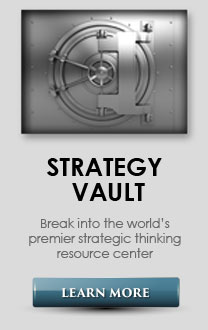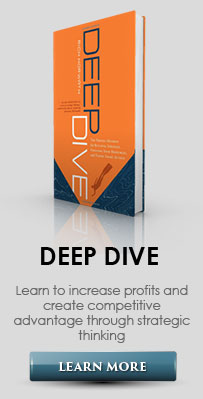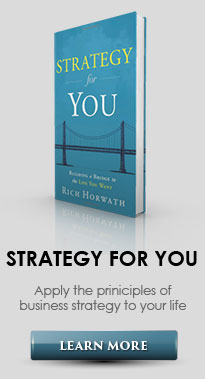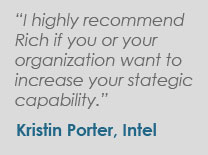
Leading Strategy Conversations"Conversations are the way workers discover what they know, share it with their colleagues, and in the process, create new knowledge for the organization. In the new economy, conversations are the most important form of work." Alan Webber, co-founder, Fast Company Magazine Imagine last year's record-breaking sales performance has earned representatives from the different functional areas of your company—marketing, sales, account management, HR, IT, etc.—with an awards trip to the islands. As the plane descends toward its destination, mechanical troubles require an emergency water landing (yes, you should have been paying attention to the flight attendant when she showed how to inflate the life vest under the seat). All passengers swim safely to different islands around the plane—marketing managers to one island, sales managers to another island—and so on. However, with no operable electronic devices, you are unable to communicate with your colleagues on the other islands. How does this story end? It doesn't. While physical islands don't separate managers, conceptual ones certainly do. Research with 880 managers shows that only 35 percent are aware of other functional group's strategies within their own company! Why? Less than half of managers set aside time on a regular basis throughout the year to think about and discuss strategy with their colleagues. The result is that many managers reside on "Islands of Insight"—secluded beaches of great ideas that go unshared, unnoticed and unused by others in the organization. These Islands of Insight are perhaps the greatest source of untapped potential in any organization. The good news is that the key to unlocking this potential doesn't require new capital, equipment, or people. All it requires are conversations. A strategy conversation is defined as a verbal interchange of thoughts that result in new insights on how to achieve a goal. The goal may be quantitative, qualitative or problem-solving in nature. The interchange, or giving and receiving of ideas reciprocally, represents the intersection of thoughts, opinions, and assumptions that begins to create a shared understanding of the situation. Strategy conversations are valuable in internal situations such as setting strategic direction, gaining insight into one another's functional area strategies and innovating for competitive advantage. They are also of value in external situations such as developing strategic partnerships with customers, strengthening relationships with suppliers and understanding market dynamics. The barriers to internal strategy conversations include the following:
Do you notice any of these barriers to strategy conversations within your group? The barriers to external strategy conversations include the following:
Are any of these barriers to strategy conversations with customers negatively affecting your business? To move strategy conversations from concept to reality, I created the Strategy Conversation Framework to provide a guide to leading strategy conversations internally with your teams and externally with your customers. Strategy conversations involve three elements: Dialogue, Discussion and Direction. 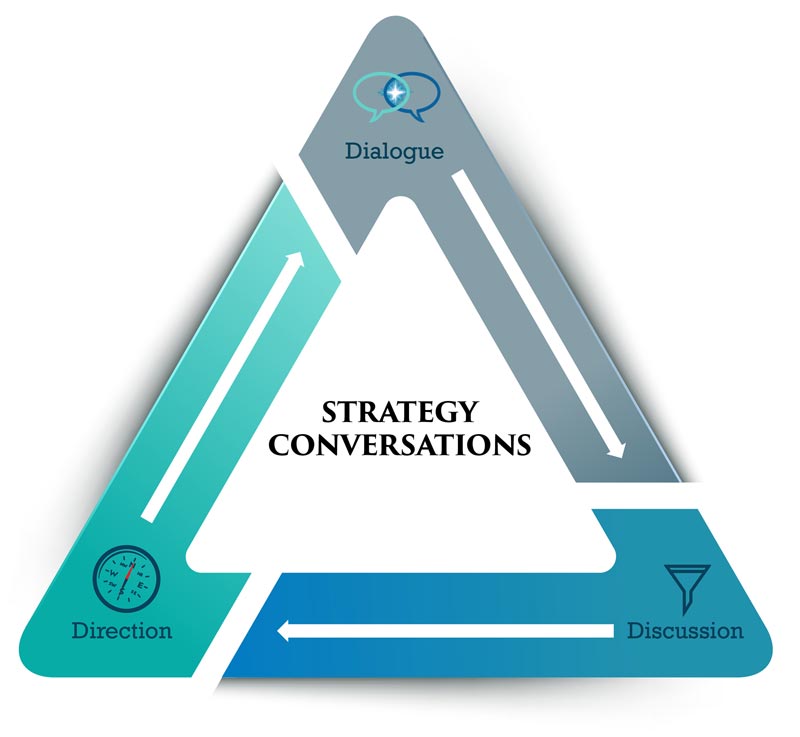
DIALOGUE To engage in the Dialogue phase, begin with the following starter questions:
DISCUSSION To engage in the Discussion phase, begin with the following starter questions:
DIRECTION To engage in the Direction phase, begin with the following starter questions:
Strategy conversations can transform the internal Islands of Insight in your organization into a powerful Insight Ecosystem where people's best thinking is shared and leveraged on a regular basis. They can span the silos between functional areas and levels, create greater commitment to one another's strategies and extinguish a culture of fire drills. From an external perspective, strategy conversations can create a common ground of value from which you, your customers and suppliers can all benefit. They can shift your customer's perspective of working with you from that of a transactional vendor to a real strategic partner. If you see gaps in how your organization functions, it's likely that the central gear of strategy conversations is missing. Without that gear, silos will stand, assumptions will go unchecked and potential customers will be lost. Converse now, or forever hold your peace. |


